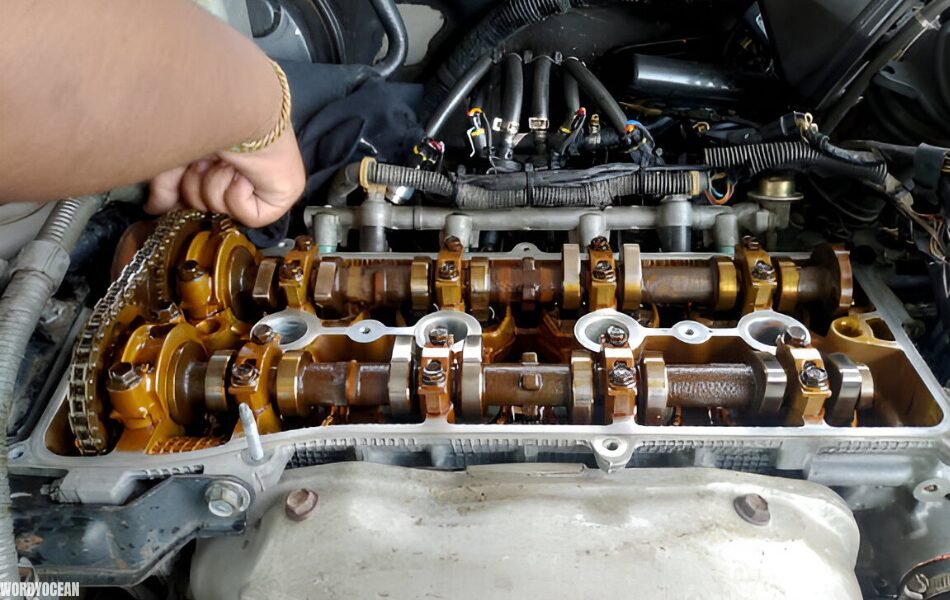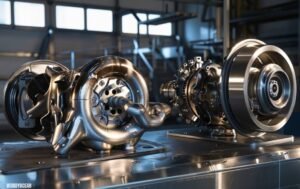How to Change the Glass on a Bisofice Stirling Engine

Bisofice Stirling engines are remarkable devices that convert thermal energy into mechanical work through a unique cycle of heating and cooling. Known for their efficiency and versatility, these engines are commonly used in applications ranging from renewable energy systems to educational demonstrations in thermodynamics. However, like any mechanical system, they require regular maintenance to operate optimally. One critical component that often requires attention is the glass, which serves as a vital element in the engine’s performance and aesthetic appeal.
Maintaining the glass on a Bisofice Stirling engine is essential for ensuring that it operates safely and effectively. Over time, the glass can become scratched, discolored, or even cracked, which can impair functionality and pose safety risks. Regular inspection and timely replacement of the glass not only enhance the engine’s efficiency but also extend its lifespan. This article will guide you through How to Change the Glass on a Bisofice Stirling Engine, providing step-by-step instructions and valuable tips to ensure a successful replacement.
We will start by discussing the importance of this maintenance task, followed by a thorough examination of the necessary tools and safety precautions. Then, we will walk you through each phase of the replacement process, including how to disassemble the engine, remove the old glass, clean the frame, and properly install the new glass. Finally, we’ll cover essential testing and troubleshooting techniques to confirm that your engine is back in working order. Whether you are a seasoned hobbyist or a newcomer to the world of Stirling engines, this guide aims to equip you with the knowledge you need to confidently change the glass on your Bisofice Stirling engine.
Understanding the Bisofice Stirling Engine
A Bisofice Stirling engine is a type of heat engine that operates based on the Stirling cycle, utilizing the expansion and contraction of gas within a closed system to generate mechanical energy. These engines are known for their high efficiency and ability to use various heat sources, such as solar energy, waste heat, or even combustion processes. Their design features two pistons that move in a synchronized manner, driven by the temperature difference between the hot and cold ends of the engine. This unique operation allows Bisofice Stirling engines to function quietly and reliably, making them popular for both educational purposes and practical applications in renewable energy systems.
Importance of the Glass Component
The glass component in a Bisofice Stirling engine serves not only a functional purpose but also plays a crucial role in its visual appeal. Typically positioned in a way that allows users to observe the internal mechanics of the engine, the glass acts as a barrier that contains the gas while enabling visibility. This transparency is essential for educational demonstrations, allowing observers to witness the fascinating process of thermal energy conversion in real time. Moreover, the glass must withstand varying temperatures and pressures, making its integrity vital for safe and efficient engine operation. Any compromise to the glass can disrupt this delicate balance, affecting both performance and safety.
Common Issues Related to Glass Wear and Tear
Over time, the glass in a Bisofice Stirling engine may encounter wear and tear due to exposure to heat, mechanical stress, and environmental factors. Common issues include scratches, cracks, and discoloration, all of which can signal the need for replacement. Scratches may obscure visibility, making it difficult to monitor engine performance, while cracks can lead to gas leaks, which compromise the engine’s functionality and safety. Discoloration often indicates thermal stress or chemical exposure, suggesting that the glass is no longer suitable for use.
Neglecting to address these signs can have serious consequences. For instance, a cracked or damaged glass can result in hazardous conditions, such as gas leakage, which poses risks of fire or explosion. Additionally, continued operation with impaired glass can lead to diminished performance, ultimately shortening the lifespan of the entire engine. Regular inspections and timely replacements are essential to ensure that your Bisofice Stirling engine remains safe, efficient, and functional. Understanding these aspects not only prepares you for the replacement process but also emphasizes the importance of proactive maintenance in preserving your engine’s integrity.
Preparation for Changing the Glass
Before embarking on the task of changing the glass on a Bisofice Stirling engine, it is essential to gather the appropriate tools and materials. Having everything ready will streamline the process and minimize the risk of errors. You will need a set of screwdrivers, including both flathead and Phillips types, to remove any screws holding the glass in place. A wrench set will also be necessary for loosening and tightening various components. Additionally, a clean cloth or lint-free wipes will help you keep the work area tidy and ensure that the glass surface remains pristine during installation.
Safety is paramount when working on any mechanical system, and changing the glass on a Bisofice Stirling engine is no exception. Before starting the replacement, equip yourself with safety gear such as gloves and goggles. These items protect your hands and eyes from sharp edges and potential splinters from the glass. Working with glass can be unpredictable, so it’s important to take these precautions seriously.
Another critical step is ensuring that the engine is completely powered off and allowed to cool down. This process involves disconnecting any power sources and waiting sufficient time for the engine components to reach a safe temperature. Typically, it’s advisable to wait at least 30 minutes after shutting off the engine, but this may vary based on how long the engine has been operating. By taking these safety measures seriously, you create a secure environment that minimizes risks, allowing you to focus on the task at hand. Preparing adequately not only enhances your safety but also sets the stage for a smooth and effective glass replacement.
How to Change the Glass on a Bisofice Stirling Engine: Step-by-Step
Step 1: Disassemble the Engine
To change the glass on a Bisofice Stirling engine, the first step is careful disassembly. Begin by ensuring that the engine is completely powered off and has cooled down. Identify and remove any panels or coverings that obstruct access to the glass. Use the appropriate screwdriver to gently loosen screws, taking care not to strip them. As you remove each component, place the screws and small parts in a labeled container to avoid confusion later. This method not only keeps everything organized but also makes reassembly more efficient.
Take special note of how each piece is positioned, as this will aid in correctly putting everything back together. It can be helpful to take pictures during the disassembly process to serve as a reference for reassembly. Avoid forcing any components apart, as this could lead to damage. Instead, apply gentle pressure and wiggle parts slightly to dislodge them as needed.
Step 2: Remove the Old Glass
Once the engine is disassembled, the next step is to carefully remove the old glass. Start by examining how the glass is secured within the frame. Often, it will be held in place by rubber seals or clamps. Gently loosen or remove these securing mechanisms, taking care not to apply too much pressure that could shatter the glass. If the glass is stuck due to residue or aging seals, use a soft tool, like a plastic scraper, to ease it free. This approach minimizes the risk of damaging surrounding components.
As you lift the glass out, be cautious of sharp edges, and ensure that you are wearing gloves to protect your hands. If the glass breaks during removal, carefully collect the shards and dispose of them safely, as broken glass can pose significant hazards.
Step 3: Clean the Frame
With the old glass removed, it is essential to clean the frame where the new glass will be installed. This step ensures a proper seal and prevents leaks, which are critical for the efficient operation of the engine. Use a mild cleaning solution or isopropyl alcohol along with a lint-free cloth to wipe down the area thoroughly. This method helps eliminate any dirt, oil, or residue that may have accumulated over time.
Take care to avoid abrasive cleaners or materials that could scratch the surface of the frame. A clean surface not only improves the adhesion of any seals but also enhances the visual appeal of the engine. Make sure the area is completely dry before proceeding to the next step.
Step 4: Install the New Glass
Installing the new glass requires precision and care. Begin by ensuring that the replacement glass matches the specifications needed for your Bisofice Stirling engine. Gently place the new glass into the frame, aligning it correctly with any grooves or seals. If your engine uses rubber gaskets or seals, ensure they are clean and in good condition before proceeding. A secure fit is critical, as any gaps can lead to leaks that diminish performance.
Once the glass is positioned correctly, reattach any securing mechanisms, such as clamps or screws, while taking care not to overtighten. This can lead to stress fractures in the glass. Check the fit from multiple angles to ensure it is seated properly and securely.
Step 5: Reassemble the Engine
Reassembling the engine is the final step in changing the glass on your Bisofice Stirling engine. Begin by referring to the notes or photos taken during disassembly to guide you. Carefully replace any panels or coverings, ensuring that each component fits snugly into place. As you reinsert screws, follow the original tightening sequence to distribute pressure evenly and prevent warping.
Be mindful of common pitfalls, such as forgetting to replace seals or improperly aligning parts. Take your time during this process, as rushing can lead to mistakes that might compromise the engine’s functionality. Once the engine is fully reassembled, double-check that all components are secure and in their correct positions.
Maintenance Tips for Longevity
To ensure the optimal performance and longevity of your Bisofice Stirling engine, regular maintenance is crucial. Establishing a routine inspection schedule helps catch potential issues early and keeps your engine running smoothly. One of the primary areas to focus on is the glass component. Inspect it periodically for any signs of wear, such as scratches, cracks, or discoloration. A thorough visual check should be conducted every few months, especially if the engine is used frequently.
In addition to examining the glass, it is essential to check the integrity of the seals and gaskets surrounding it. These components play a critical role in maintaining airtight conditions, which are necessary for efficient operation. Look for any signs of degradation or brittleness in the seals, as compromised seals can lead to gas leaks and decreased performance. Ensure that other engine parts, such as pistons and cylinders, are free from debris and operating smoothly. Regular lubrication of moving parts is also recommended to minimize friction and wear, contributing to the overall durability of the engine.
Being aware of indicators that suggest the glass may need replacement can save you time and prevent further damage. One of the most obvious signs is visible damage to the glass itself, such as cracks or deep scratches that impair visibility. Discoloration is another significant warning sign; if the glass appears foggy or stained, it may indicate that it can no longer withstand the thermal stresses of the engine environment.
Conclusion: How to Change the Glass on a Bisofice Stirling Engine
Changing the glass on a Bisofice Stirling engine is a crucial maintenance task that significantly impacts the engine’s performance and safety. Properly maintained glass ensures that the engine operates efficiently, allowing users to observe the fascinating mechanics at work without compromising safety. This process not only enhances the visual appeal of the engine but also prevents potential hazards associated with leaks or structural failures.
By following the detailed steps outlined in this guide, you can confidently change the glass and ensure that your Bisofice Stirling engine remains in optimal condition. Regular maintenance and timely replacement are vital for longevity and performance, underscoring the importance of being proactive in your upkeep efforts.
We encourage you to take these practices to heart and share your experiences or questions in the comments section. Engaging with fellow enthusiasts can provide additional insights and support as you navigate your journey with Stirling engines. Whether you are a beginner or an experienced user, your contributions enrich the community and foster a culture of shared knowledge.
FAQ’s: How to Change the Glass on a Bisofice Stirling Engine
Q- What is a Bisofice Stirling engine?
A: A Bisofice Stirling engine is a type of heat engine that operates on the Stirling cycle, using the expansion and contraction of gas in a closed system to produce mechanical energy. Known for their high efficiency, these engines can utilize various heat sources like solar energy or waste heat, making them versatile for educational and practical applications.
Q- Why is the glass component important in a Bisofice Stirling engine?
A: The glass component allows users to observe the internal workings of the engine while containing the gas necessary for its operation. It plays a crucial role in the engine’s functionality and safety, as any damage to the glass can lead to performance issues or hazardous conditions.
Q- What are common signs that the glass needs replacement?
A: Signs that the glass may need replacement include visible cracks, deep scratches, or discoloration. Additionally, fluctuations in engine performance, unusual noises, or compromised seals can indicate that the glass is not functioning correctly.
Q- What tools are needed to change the glass on a Bisofice Stirling engine?
A: To change the glass, you will need screwdrivers, a wrench set, a clean cloth or lint-free wipes, and the appropriate replacement glass, typically made of tempered or borosilicate material for durability.







